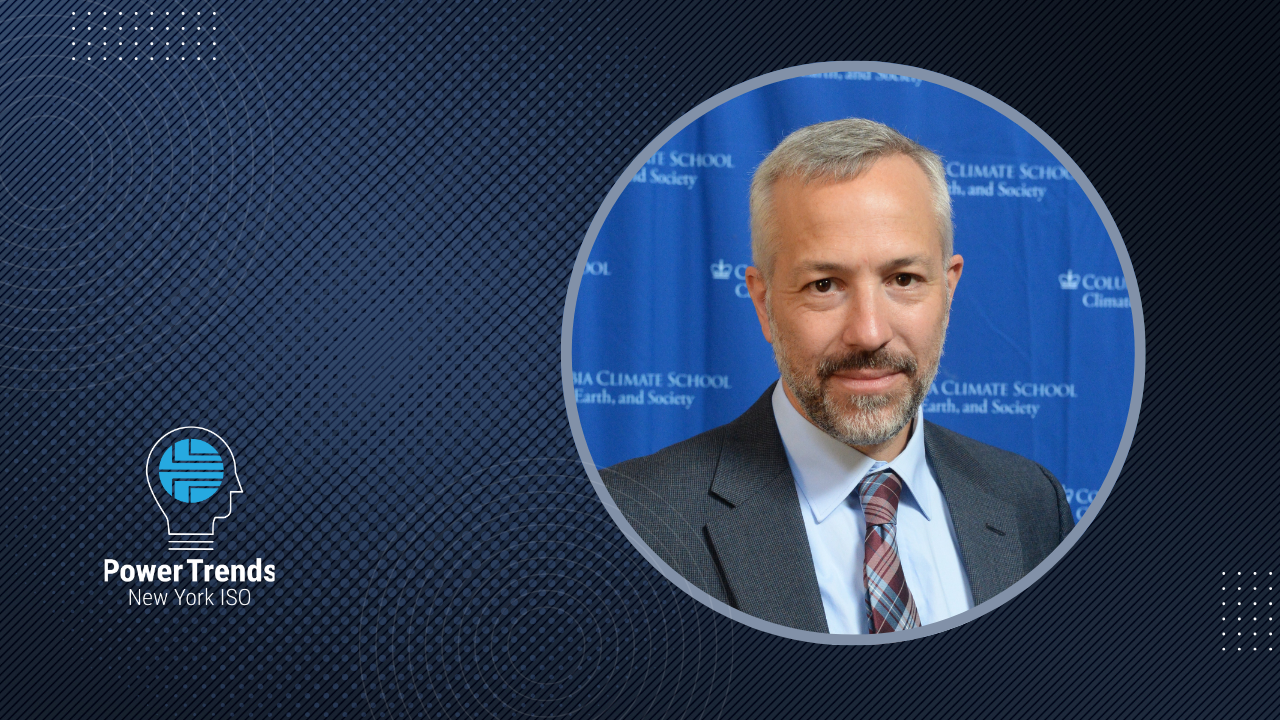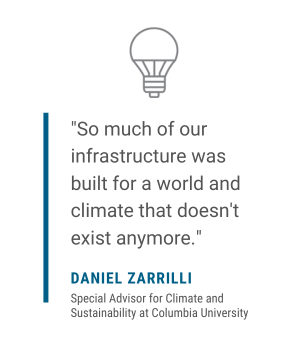Podcast Ep. 31: Columbia Climate School’s Daniel Zarrilli on New York’s Decarbonization Progress

Columbia University’s Daniel Zarrilli knows a thing or two about New York City and the effects of climate change.
For almost a decade prior to Hurricane Sandy, he worked on the city’s waterfront, managing maintenance and construction of the city’s piers and bulkheads, overseeing cruise terminals and other maritime assets, and working with coastal communities on a variety of local projects. That experience along the city’s 520-mile shoreline, plus his training as an engineer, put him in view of Mayor Michael Bloomberg as he was standing up his initiative to rebuild New York following Hurricane Sandy and make it more resilient.
Bloomberg appointed Zarrilli as the city’s first resilience director. He then became Chief Climate Policy Advisor under Mayor Bill de Blasio, helping usher landmark energy policy through the city council, which mandates emissions reductions produced by the city's largest buildings of 40 percent by 2030.
Now Zarrilli serves as Special Advisor for Climate and Sustainability at Columbia University, helping to create a new world-leading climate school and advising on pathways to achieve the university’s deep decarbonization goals.
This wealth of deep experience and expertise makes him a valuable addition to the NYISO’s Environmental Advisory Council, a group of outside experts that informs NYISO leadership on evolving state and federal climate policy and environmental justice considerations.
Local Law 97, New York City’s building decarbonization law passed in 2019, requires most buildings over 25,000 square feet to meet new energy efficiency and greenhouse gas emissions limits, with even stricter limits coming into effect in 2030.
There are already indications that the policy is working, Zarrilli said.
“New Yorkers have so much to be proud of for the progress that has been made,” Zarrilli said. “There were $20 billion in climate adaptation investments
made after Hurricane Sandy, everything from flood protection to grid upgrades to new elevated hospitals in our coastal communities.”
“I think the much more exciting thing about Local Law 97 is how it has catalyzed this marketplace in New York City around clean energy technology, innovation, and investment that is all now centered in New York City,” he said.
Even with the signs of progress, Zarrilli still sees challenges ahead.
“So much of our infrastructure was built for a world and a climate that doesn’t exist anymore,” he said.
He pointed to concerns about global economic conditions and supply chain challenges that can make electrification projects difficult. In the offshore wind space, he noted that some coastal communities have zoning concerns and questions that must be addressed and answered.
“The NYISO sits right at the crossroads of so many of these questions,” he said.
Zarrilli credits the NYISO’s forward-thinking approach to the wholesale electric market, which he says will drive incentives to speed up the clean energy transition.
“The role that the NYISO plays to help provide that stimulus and incentive is really important, and not a fully appreciated role,” Zarrilli said, “but it's a critical one that I think the state and other ISOs are going to continue to learn from.”
Listen to the podcast
